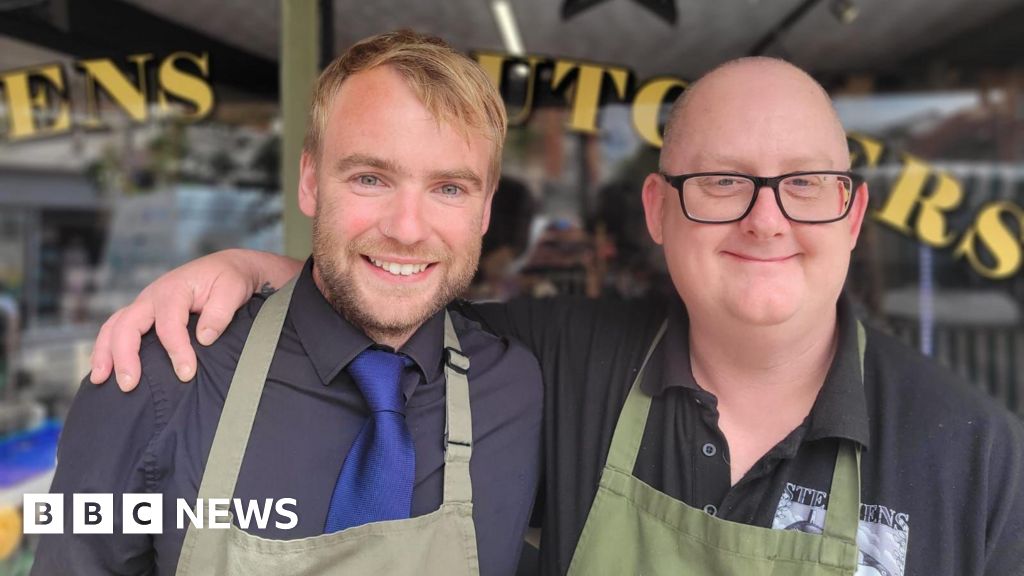Locals welcome confused Glastonbury Festival-goers

Glastonbury's Ripple Effect: Local Businesses Benefit Despite Festival-Goer Confusion
As the gates of Glastonbury Festival swing open, welcoming an estimated 200,000 attendees to Worthy Farm, the surrounding town of Glastonbury is experiencing its own surge of activity. While the festival site is located approximately five miles from the town center, a steady stream of festival-goers, often disoriented, are finding their way into Glastonbury, providing a boost to local businesses. However, the influx also presents unique challenges and a temporary shift in the town's dynamic.
Unexpected Arrivals Fuel Pre-Festival Boom
The confusion surrounding the festival's location has become a recurring phenomenon, with many attendees mistakenly arriving in the town itself. Jamie Lovell, manager at Stephen's Butchers, explains, "You can see the look on their face thinking 'we're in the wrong place', so you have to explain the bus to them." Lovell notes that this influx, coupled with festival-goers intentionally visiting the town in the days leading up to the event, has led to a significant increase in business. "At the moment we get messages saying: 'can I have 400 burgers for tomorrow?' So we're all running around."
Terry Dilliway, who runs a furniture shop on Glastonbury High Street and has attended the festival for 40 years, echoes this sentiment. "They're a bit alarmed it's five miles away, people have been here who can't find it," he says. Despite the initial confusion, Dilliway acknowledges the positive impact of the festival, stating that it "is good for the town" and raises its profile internationally.
The Economic Impact: A Double-Edged Sword?
While many businesses experience a pre-festival boom, the dynamic shifts significantly once the festival is in full swing. Ayesha Kalaji, chef at the Queen of Cups restaurant, observes that Glastonbury becomes a "ghost town" during the main weekend. Her busiest period is typically on the Monday following the festival, as "bedraggled" attendees seek a filling meal before heading home. This highlights the nuanced economic impact, with some businesses thriving before and after the event, while others experience a temporary lull.
Paula Dobson, owner of The Glastonbury Townhouse bed-and-breakfast, caters to a specific niche of festival-goers seeking respite from the campsite. "From Wednesday through to Monday, they can leave their cars here, get a decent breakfast and hot shower and take the bus to the site," she explains. Her business model focuses on providing comfort and convenience, attracting attendees willing to pay for a more relaxed festival experience.
Expert Perspective: Glastonbury's Cultural and Economic Significance
Dr. Emily Carter, a cultural anthropologist specializing in festival economies at the University of Bristol, notes that Glastonbury's economic impact extends far beyond the immediate vicinity. "Festivals like Glastonbury act as significant cultural hubs, attracting not only attendees but also media attention and tourism to the region," she explains. "The influx of visitors generates revenue for local businesses, supports employment, and contributes to the overall economic vitality of the area. However, it's crucial for local authorities to manage the impact effectively, addressing potential issues such as traffic congestion, waste management, and strain on local resources."
Furthermore, Dr. Carter emphasizes the importance of preserving the unique character of Glastonbury. "The town has a rich history and a distinct identity that predates the festival. Balancing the economic benefits of Glastonbury with the need to protect the town's cultural heritage is a key challenge for local stakeholders."
Historical Context: From Pilton Pop to Global Phenomenon
Glastonbury Festival's origins can be traced back to 1970, when it was a small gathering known as the Pilton Pop, Blues & Folk Festival. Over the decades, it has evolved into one of the world's most iconic music festivals, attracting renowned artists and diverse audiences from across the globe. Its growth has had a profound impact on the surrounding area, transforming Glastonbury from a quiet rural town into a vibrant center of cultural activity, albeit temporarily.
1970: The first Glastonbury Festival, then known as Pilton Pop, Blues & Folk Festival, is held. 1980s: The festival gains momentum and attracts larger crowds. 1990s-Present: Glastonbury becomes a global phenomenon, solidifying its status as a leading music festival.
Looking Ahead: Balancing Growth and Sustainability
As Glastonbury Festival continues to evolve, the challenge lies in balancing its economic benefits with the need to preserve the town's unique character and ensure sustainable growth. Effective planning, community engagement, and responsible tourism are crucial to maximizing the positive impact of the festival while mitigating potential negative consequences. The annual influx of festival-goers presents both opportunities and challenges for Glastonbury, requiring careful management and a collaborative approach to ensure a thriving future for both the festival and the town.
Originally sourced from: BBC Entertainment
